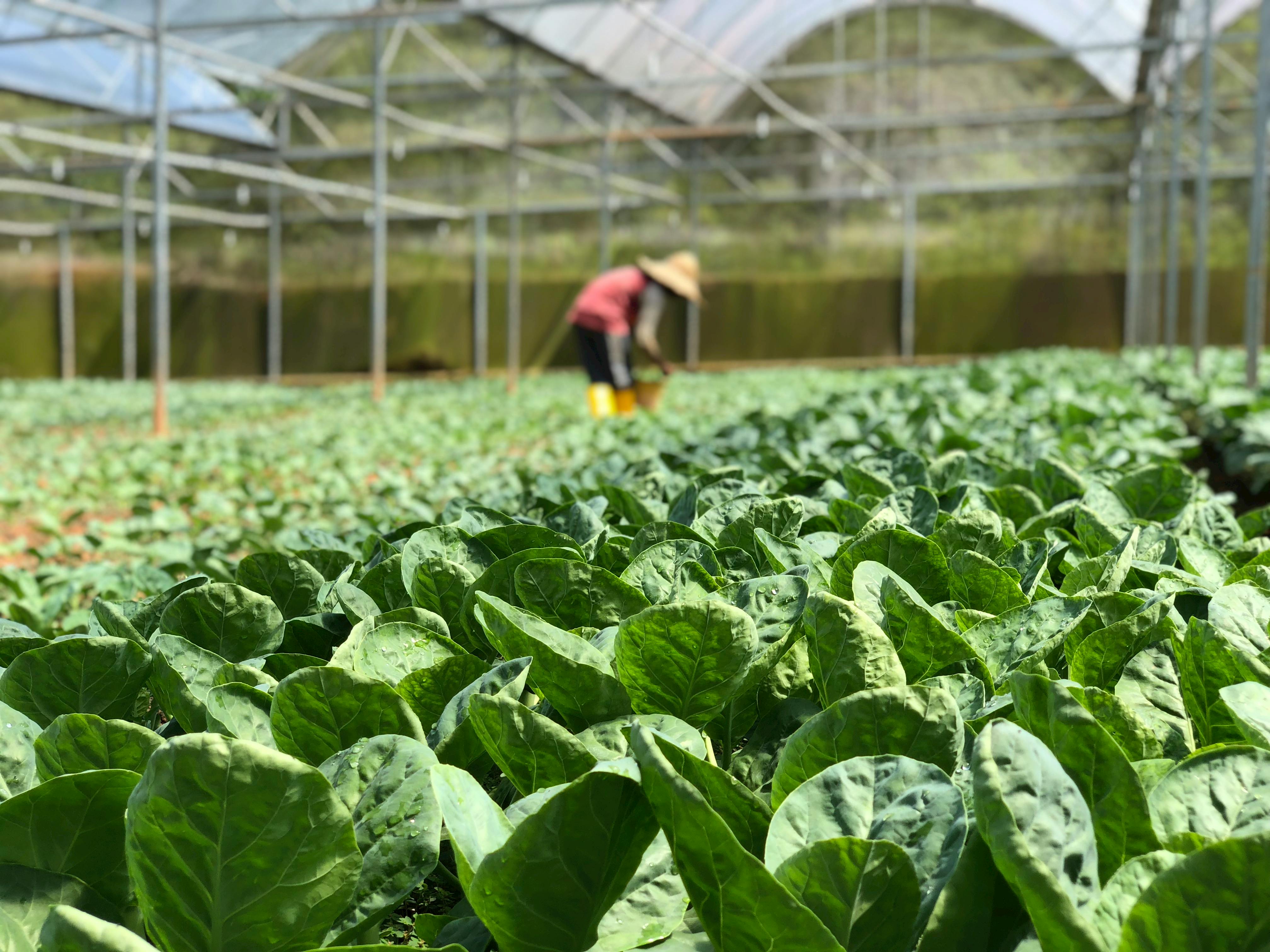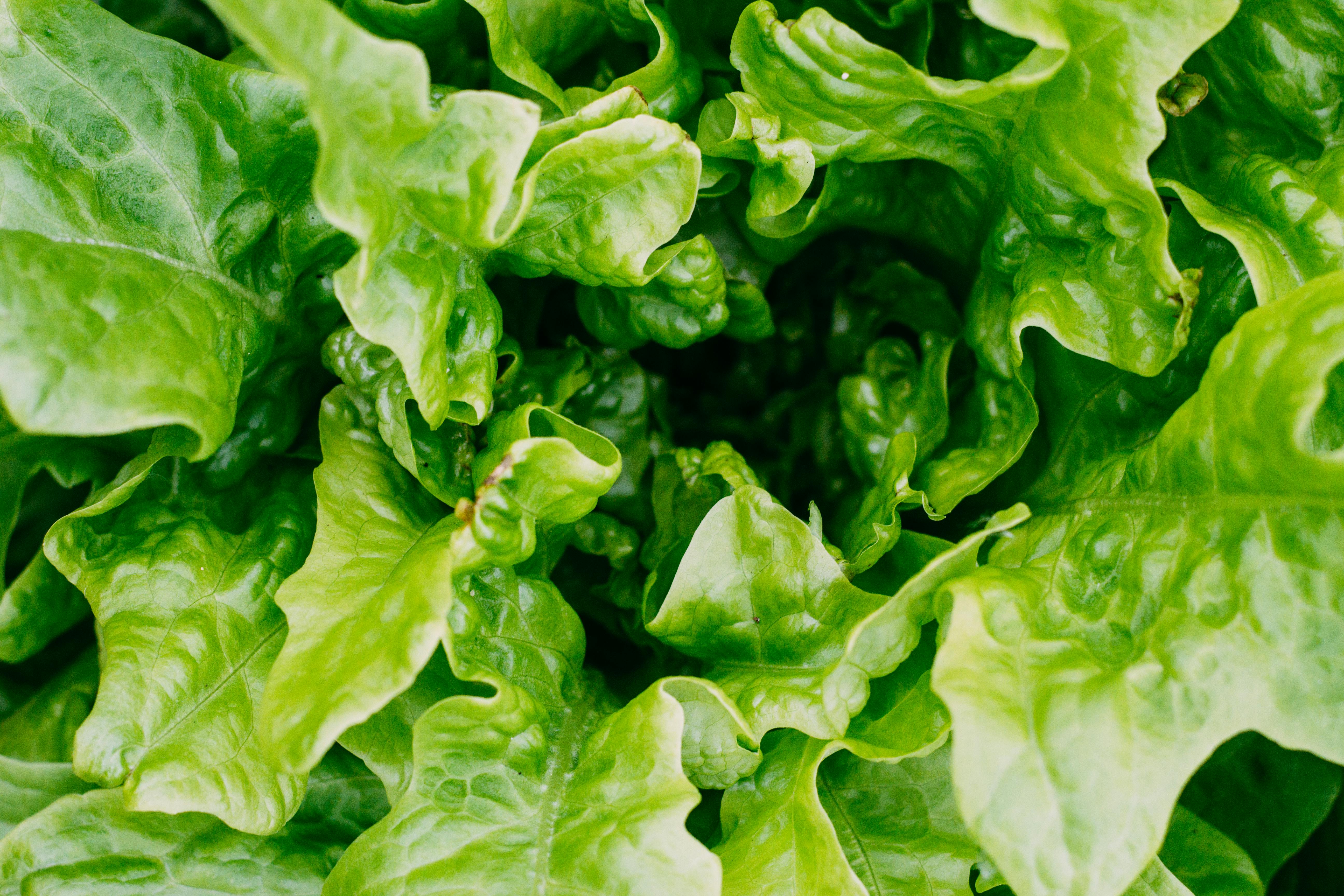Lettuce is one of the most popular and versatile vegetables in the garden, and it’s easy to see why. Not only is it incredibly healthy and tasty, but its adaptability means that it can be grown in a wide variety of conditions. But when you’re planting lettuce you may be wondering what other vegetables or plants can be planted alongside it. In this article, we’ll discuss some of the best companion plants for lettuce, as well as some tips and tricks for getting the most out of your garden.Companion plants to grow with lettuce are a great way to improve the health and productivity of your garden. Some of the best companion plants for lettuce include cucumbers, radishes, beans, peas, carrots, and beets. Planting any of these near your lettuce will help to repel certain pests and provide additional nutrients that your lettuce needs. Additionally, planting marigolds near your lettuce can aid in deterring certain harmful insects as well as provide a beautiful aesthetic element. Growing nasturtiums around lettuce also helps to repel pests while providing a lovely splash of color. All of these companion plants will work together to create a healthier environment for your lettuce and an improved harvest for your garden.
Growing Vegetables You Can Plant with Lettuce
Lettuce is an easy to grow, cool weather crop. It can be grown as a spring, summer or fall crop, depending on the variety you choose. It’s perfect for growing in raised beds, containers or even in the ground. Not only does it provide a tasty addition to salads and sandwiches, but lettuce can also be used to help your other vegetables grow. Here are some of the best vegetables you can plant with lettuce:
Beets: These root vegetables love growing in cooler weather and when planted alongside lettuce they can help keep weeds away and provide shade for the lettuce plants. Beets also provide additional nutrition to the soil.
Carrots: Planting carrots with lettuce helps keep carrot flies away from both crops. Carrots also love loose soil that is rich in organic matter and adding lettuce helps improve soil structure.
Radishes: This fast-growing vegetable likes cool weather and grows quickly when planted near lettuce. Radishes will encourage beneficial insects which will help protect your lettuce from pests.
Onions: Onions are a great companion plant for lettuce because they repel insect pests like aphids and whitefly that can damage your crop. They also help improve soil structure and add additional nutrients.
Peas: Peas are a great companion plant for lettuce because they fix nitrogen into the soil which helps improve fertility and encourages healthy growth of both crops. Plus their vines provide shade for the delicate leaves of the lettuce plants.
Spinach: Spinach grows well in cool temperatures so it’s perfect for planting alongside your lettuce crop. It’s a great source of vitamins A and C, plus it helps add valuable minerals to the soil.
By planting these vegetables alongside your lettuces you’ll not only benefit from their nutritional value but you’ll also have a healthier harvest overall. So why not give it a try next time you’re planting?
Growing Fruits You Can Plant With Lettuce
Lettuce is one of the most popular vegetables to grow in a garden. It is easy to maintain, grows quickly and does not require much space. Lettuce also makes a great companion plant for other vegetables and fruits. Growing lettuce with other plants can help you maximize your garden space, as well as provide support for each other’s growth and health. Here are some of the best fruits you can plant with lettuce in your garden.
Tomatoes are a great choice to pair with lettuce, as they do not require much sunlight, and will help keep the soil moist and cool around the lettuce plants. Tomatoes need more nitrogen than lettuce, so make sure to add plenty of compost or fertilizer when planting them together.
Pumpkins are another great companion for lettuce plants, as they will help to keep weeds away while providing shade to the lettuce during warmer months. Pumpkins also need plenty of water and fertilizer, so make sure you water them when needed and add compost or fertilizer to the soil after planting them together.
Strawberries are another great option for planting with lettuce, as they provide nutrients that can help promote healthy growth in both plants. Strawberries also need plenty of space to spread out their roots and thrive, so make sure to give them enough room when planting them together with your lettuce plants.
Finally, apples are an excellent choice for growing with lettuce due to their ability to attract beneficial insects like ladybugs that can help keep harmful pest populations down in your garden. Apples need plenty of sunshine and water in order to grow properly, so make sure you provide both when pairing them with your lettuce plants.
These are just some of the many fruits that you can plant alongside your lettuce plants in order to maximize your garden’s potential and promote healthy growth among all of its inhabitants. With proper planning and care, you can have a bountiful harvest of delicious fruits and vegetables from your very own backyard!

Grouping Plants When Planting With Lettuce
Grouping plants when planting with lettuce is an important part of gardening. Proper grouping of plants ensures that the lettuce will get the right amount of sunlight and water, and that the other plants in the garden will benefit from the nutrients in the soil. By grouping plants properly, you can ensure that all of your plants grow to their fullest potential.
When grouping plants, consider their growth patterns. Lettuce is a low-growing plant, so it should be grouped with other low-growing plants such as radishes or spinach. Taller plants such as tomatoes and peppers should be placed in a separate area from the lettuce to ensure they don’t overshadow it. To ensure proper spacing between each type of plant, consider spacing them at least 10 inches apart from each other.
It is also important to consider the soil quality when planting with lettuce. Lettuce prefers rich organic soil, so it’s best to mix compost or manure into the soil before planting your lettuces. This will help provide them with additional nutrients and help keep them healthy throughout their growing season. Additionally, make sure to water your lettuces regularly as they are more prone to drought than other types of vegetables.
When grouping plants for planting with lettuce, make sure to keep taller plants away from shorter ones by at least 10 inches. This will help prevent overcrowding and will allow all of your vegetables to receive adequate sunlight and water throughout their growing season. Additionally, enrich your soil with compost or manure before planting your lettuces for optimal growth and health results. Finally, remember to water your lettuces regularly throughout their growing season for best results!
Planning
Proper planning is essential when growing vegetables with lettuce. Deciding what varieties of lettuce you want to grow, as well as other vegetables that will do well in the same environment, is important. Consider the amount of sun and water that will be available for each variety. Also be sure to select varieties that are suited to your climate and soil type.
Preparing the Soil
Before planting, it’s important to prepare the soil so it is ready for your vegetables and lettuce. Start by testing your soil pH level and adjusting it appropriately. You may also want to add organic matter such as compost or manure to provide nutrients for your plants. Be sure to till the soil thoroughly so there are no clumps or rocks that could impede root growth.
Planting
Once the soil is prepared, you can start planting your lettuce and other vegetables. Planting deeper than normal may help protect young plants from extreme temperatures and pests. Be sure to follow the instructions on the seed packet for ideal spacing between each plant. Mulch can also be beneficial for helping regulate moisture levels in the soil.
Caring for Plants
Once planted, it’s important to take care of your vegetables and lettuce properly so they will flourish and produce a healthy harvest. Water regularly, being careful not to over-water or allow the soil to become soggy. Weeds should be removed as they appear so they don’t compete with your plants for resources. Fertilize regularly according to instructions on fertilizer packaging.
Harvesting
It’s important to harvest vegetables at their peak ripeness in order to enjoy maximum flavor and nutrition benefits. When harvesting lettuce, be sure not to pull up entire heads of lettuce; instead, cut individual leaves or outer leaves of a head with scissors or a sharp knife. Be sure not to leave any unripe produce on the plant as this can stunt growth of remaining produce.
Growing vegetables with lettuce can provide you with a healthy harvest if done properly. Planning ahead, preparing the soil properly, planting correctly, taking care of plants properly, and harvesting at peak ripeness are all essential steps in ensuring a successful vegetable garden with plenty of delicious produce!
The Benefits of Growing Plants Together With Lettuce
Growing lettuce with other plants can be a great way to maximize garden space and improve the health of your plants. Lettuce is a cool-season crop, meaning it can tolerate cold temperatures better than other vegetables like tomatoes and peppers. When planted alongside other vegetables, it acts as a natural shield from the elements, providing shade and shelter for heat-sensitive crops. Additionally, lettuce can help to improve soil fertility due to its shallow root system, which is great for nutrient uptake and aeration.
Lettuce also acts as a natural pest repellent. It’s common for pests such as aphids and caterpillars to attack vegetable plants that are planted in close proximity to each other. Growing lettuce with your other vegetables helps to create an environment that is not conducive to these pests, which can help protect your garden from infestations. Additionally, some lettuce varieties are known for their strong aromas that naturally repel certain insects such as aphids and whiteflies.
Finally, growing lettuce with other vegetables can make your garden more aesthetically pleasing. The bright colors of lettuce leaves provide a beautiful contrast when planted alongside traditional green-leafed vegetables like broccoli or kale. This will give you more options when it comes to designing your garden layout and creating an aesthetically pleasing outdoor space.
Overall, growing lettuce with other vegetables in your garden is an excellent way to maximize space and make the most out of your gardening efforts. Not only does it provide shelter from the elements, but it also helps protect against pest infestations while adding a splash of color to your outdoor space.

Conclusion
Lettuce is a versatile and nutritious vegetable that can be used in many dishes. It thrives in cool climates and grows quickly, making it a great addition to any garden. When planting lettuce, it’s best to plant it with companion plants such as radishes, onions, carrots, beets, and peas that provide support and protection from pests. By planting these vegetables together you can get the most out of your garden space and achieve a healthy harvest.
Overall, lettuce is an easy-to-grow vegetable that can be planted with other vegetables for a successful garden harvest. With careful consideration of the needs of all plants involved, you can use companion planting to maximize your garden’s growth potential. With a little bit of effort and planning you will have a bountiful harvest of lettuce and other vegetables to enjoy throughout the growing season.

